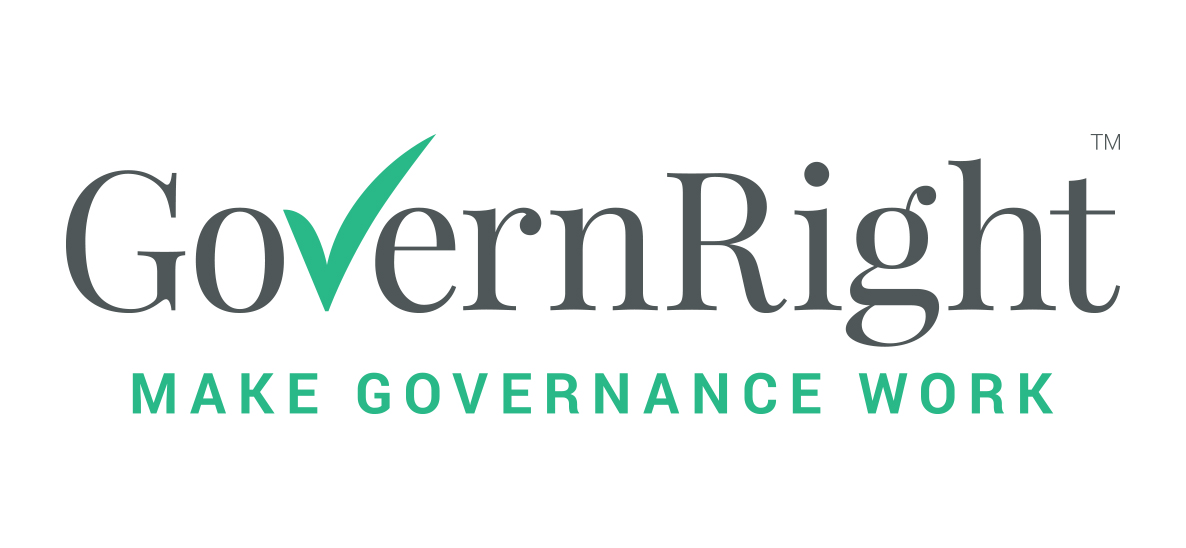The 7 Pillars of Good Governance
A 25 year career spent advising boards & senior management in the public, private, government and not-for-profit sectors on how to take governance theory into practice, led me to developing the GovernRight Framework.
GovernRight encourages a forward-looking perspective. Its integrated reporting supports the Board to meet its key role to oversee:
Growth – implementation of strategy to build a sustainable organisation;
Change – monitoring and management of significant changing and emerging risks and opportunities;
Risk – identification, mitigation, management and positive assurance of identified risks in the operations.
It focuses board/committee time on the resource deployment /strategy /risk relationship and gives those in an oversight role comfort that:
• what is meant to be happening is;
• that initiatives are on track; and
• there is a culture of outcome, not activity.
The GovernRight framework is underpinned by the 7 Pillars of Good Governance:
Pillar 1 - Right skills, right roles, one team
The board understands its role, has the appropriate relationship with its management and has all aspects needed to operate successfully, as a team.
Pillar 2 – Oversight of strategy
Focus on oversight of strategy, with an understanding of the pillars of success.
To be successful, the organisation must answer 5 key questions:
1. How do we want to be seen by knowledgeable stakeholders in 3-5 years’ time?
2. Who are our key stakeholders and what is our intended strategic relationship with each one?
3. What are the core values that define us?
4. Why are we here?
5. What are the cornerstones to delivering our strategic intent?
The board is responsible for driving value from successful implementation of strategy. However, if the strategic plan is not developed with a governance mindset, then implementation in a “should” mindset is very difficult (see Pillar 3).
Pillar 3 – Emerging governance
Monitor and understand the changing environment and trigger board discussion around the “issue” not the “calendar”, so that the Board operates with a “should” mindset.
Pillar 4 - Oversight of known risks, in context of board endorsed risk appetite
Systematic oversight of the management of key identified risks in context of a board endorsed risk appetite, combined with a system of positive assurance.
Pillar 5 – A system of clear precise “key performance drivers”
A system of clear, precise, key performance drivers that easily demonstrate whether today and tomorrow are under control, allowing focus on next month and next year.
Pillar 6 - A culture of accountability and engagement
The board needs to drive the organisation’s culture, engaging with key stakeholders, empowering management, leading accountability by being accountable and demanding accountability. Everyone within the organisation should know what is expected of them and where they are held to account.
The organisation needs clear operational plans that take strategy to implementation via transparent, measurable milestones. This relies on all support functions being efficient and an underlying culture of continual improvement leading to the most efficient use of resources.
Pillar 7 – Continuous improvement
The framework involves continual measurement of performance against each pillar to develop a culture of continuous improvement. This means aligning reporting, at all levels, to support an efficient and effective board meeting.
About the author:
Simon Neaverson has been an advisor and consultant to boards and senior management in the public, private, government and not-for-profit sectors for over 25 years. He is the founder of GovernRight and a senior facilitator in strategy, risk and corporate governance with the Australian Institute of Company Directors.
Follow Simon on Twitter: https://twitter.com/SimonNeaverson


